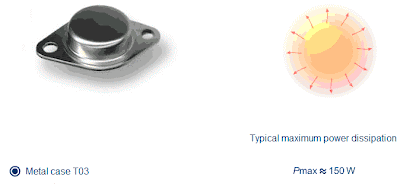Static Mode Operation
A power device is working in static mode when dc currents and voltages are applied to its terminals.The above figure shows the schematic symbols, the terminal names, and the specific currents and voltages for BJT, MOSFET and IGBT.
Bipolar transistors are current controlled devices. In contrast, MOSFETs and IGBTs are voltage-driven devices. The performance characteristics of MOSFETs are generally superior to those of bipolar transistors: significantly faster switching times, higher input impedance, the absence of second breakdown, the ability to be paralleled, simpler drive circuitry.
Power BJT
Bipolar-based power devices include high-power bipolar transistors and Darlington transistors.The current gain β of power bipolar transistors depends on the collector current IC. When the current increases, the current gain decreases as shown in the above figure.
To raise the current gain, Darlington transistors are used. Darlington transistors consist of two transistors connected in an emitter-follower configuration that share a common collector. The key advantage of the Darlington configuration is that the total current gain of the circuit equals the product of the current gain of both devices.
Power MOS Transistors as Switches
The behavior of enhancement-mode transistors depends on the applied gate-source voltage UGS. The n-MOS transistor is turned-off when UGS is smaller than the threshold voltage UT. There is no current and the device is replaced with an open switch. The inverse diode is inherent to the structure of power MOSFET and ensures a reverse-voltage blocking capability of the device.When UGS > UT, the transistor is now turned-on. The key to MOSFET operation is the creation of the inversion channel beneath the gate; this allows current to flow. The region between the drain and source can be thought of as a resistor RON, although it does not behave in the same linear manner as a conventional resistor.
IGBT Characteristics
The above figure shows the equivalent circuit and static output I-V characteristics of an IGBT.An IGBT is in a turn-off state if the gate-emitter voltage UGE is smaller than the threshold voltage UT. When UGE > UT the MOS transistor goes to turn-on. Then, the collector current from the IGBT flows through the series connected emitter-base junction of the PNP transistor, and subsequently through the drain-source channel of the MOS transistor. The output characteristics of IGBT devices are similar to those of MOSFET devices, but due to the series connected junction they are shifted approximately 0.7 V to the right. The output characteristics have two regions – the ohmic region (for small UCE values), and the saturation region (for high UCE values).








.gif)




















